Today we are joined by Mark Peterson, founder of Ecom Blueprint and…
Eric Smith Shares His $400K Dropshipping Journey
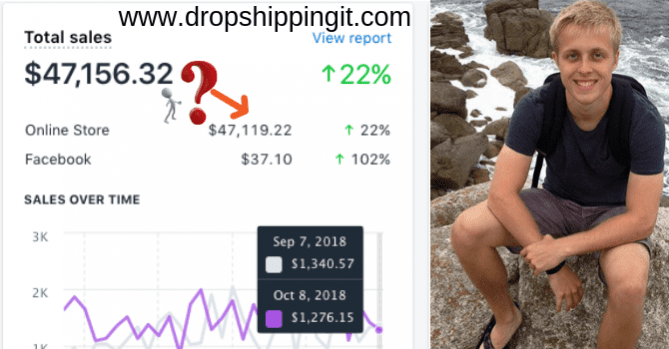
1. Eric Smith Shares His $400K Dropshipping Journey
Welcome, guys, to another exciting one-on-one interview with Eric Smith, one of the leading eCommerce experts and dropshipping gurus.
Let me introduce you to Eric if this is your first time hearing the name.
Eric founded Niche Scraper, one of the market’s best niche research dropshipping tools; find the full review here.
The tool is designed to crawl top Shopify dropshipping stores to analyze top-selling products, potential products, sales reports, and product volume.
So he will tell us more about himself.
Eric, I am delighted to have you on this blog as part of my interview series, and I am grateful for this opportunity.
Table of Contents
Eric Smith Of Niche Scraper Shares About Dropshipping
For those who may not know you yet, can you briefly introduce yourself?
Hey Samwel! I’m a 26-year-old programmer who fell in love with dropshipping and eCommerce. I started programming when I was 13, developing online games here and there, and eventually, I went to university to study Software Engineering.
After working in the software industry for a few years, I decided to be my boss and began dropshipping.

Today, I’m fortunate to make six figures with my online stores. I am also the creator of a product research tool called Niche Scraper.
I understand you held a robust and influential position in your previous job at Facebook. What made you quit, considering many wish they had a career like yours?
Yeah, that’s right. I worked as a software engineer on Facebook and Instagram for several years. A small team and I were responsible for creating Instagram Stories, which was wildly successful and is currently used by millions worldwide.
Working there had many great perks—there was free food, and celebrities always came by; it was a “dream job.” But at the end of the day, I was still being told what to do, and nothing I developed was my own.
I had always wanted to be my boss, so I decided to quit and attempt to start my own business.
Many people have told me it is a terrible idea, but you must ignore it and do what makes you happy.
How did you come across dropshipping, and when did you decide to start?
I came across it when I was 22 in college. I vividly remember reading a post on Reddit about how some guy was making $300k a year drop-shipping vitamins while traveling the world.
This left a significant impression on me, but I needed to take the initiative to try it myself. Fast-forward several years to when I was working at Facebook.
I told my girlfriend I was considering leaving my job to start a business. I had no idea what I wanted to do when she asked me.
I remembered that dropshipping article I had read on Reddit several years prior, so I went to my computer and typed the term “dropshipping” into Google.
I was amazed to hear the success stories of those who quit their jobs and gained financial freedom. I wanted to escape the rat race of a traditional career, so I thought, if they could do it, why couldn’t I? So, I took a leap of faith and decided to try it.
What was your dropshipping journey like, considering it’s challenging to get into, especially if you’re green and clueless?
Yeah, it can be challenging for someone to get into at the beginning. There’s an overwhelming amount of information out there.
Most new drop shippers become paralyzed by all the new things they need to learn. My journey wasn’t an overnight success like you often hear about; it took a few months of trial and error before I figured things out.
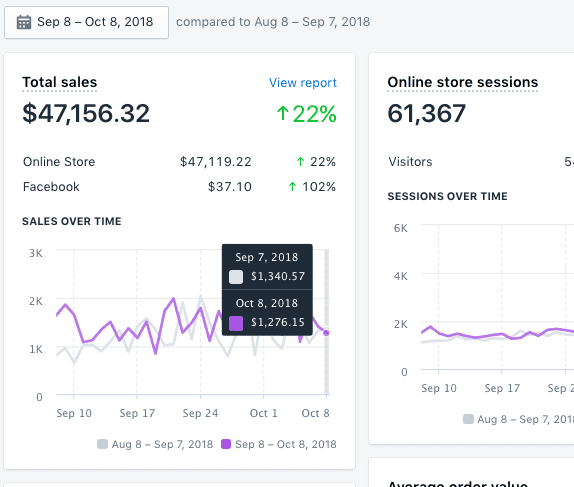
I remember my first few weeks. I only made a few sales but spent around $400 on ads, so it was a rocky start.
I kept working on optimizing my ads and slowly saw my sales increase over the next two months. Around that time, I programmed a web crawler to analyze the web and suggest potential winning products.
A few of these products worked for me, and my sales kept growing. Within eight months of starting, I hit $47,000 monthly with a ~38% profit margin. I have a few new stores I’m testing out and looking to expand into other niches.
Do you remember your failure when you started droshipping? How many stores did you try and never worked, and why do you think they never picked up?
Looking back at my first failed store is funny because I did so many things wrong. The first one I ever created was a general store called “Gadget Panda,” it was such a disaster.
I had no idea how to research products, so I chose random products from AliExpress and needed a contact page.
If you were to list all the things you shouldn’t do, my first store was the perfect example. I emailed a few people who abandoned their carts, asking if they would provide feedback on my store. Most of their responses said they didn’t “trust” my store.
This should have been obvious, but seeing what you’re doing wrong when you’re new is hard.
So I decided to try again with a second store, but this time, I focused on a niche and made it look very professional. It made a huge difference, and this store I mentioned previously scaled to $50k a month.
Despite having stores closed down, what motivated you to continue pushing and trying new stores?
I was in a rough position because I had quit my job to work on this. If it failed, that would mean giving up on my dream of having financial freedom and returning to the 9-5 job.
Failing was not an option, and I knew it would work if I kept pushing forward. Maybe it was bloated confidence, but I saw other people doing this successfully, so I knew it would work if I got the right products in front of the right people.
What are some of the worst methods you used to find your niche or products that contributed to your early failure when you started?
When I started, I went on AliExpress, sorting by the highest order count and picking random products I thought looked “cool.” This could have been better because I had researched to see how competitive the product was or who my target demographic might be.
What’s the best way to find a profitable dropshipping niche, and do you believe in following passion or demand?
Demand is a requirement, and passion is a bonus. If you can find both, then that is a great niche. One of my favorite ways to pick a niche is through “reverse research.”
This means that instead of choosing a niche and selecting products, you choose products and see what niche matches.
I will use Niche Scraper to find 10-20 products currently trending on AliExpress and try to group them.
If 12 products are related to yoga, I would create a store in the yoga niche because I already have winning products.
Is there a lousy niche in the dropshipping world?
I wouldn’t necessarily say there is a “bad” niche, but some are more challenging. Luxury watches are one of those and, unfortunately, attract many new drop shippers.
Most customers will choose a famous brand for “luxury,” so I would avoid this niche unless you have thousands of dollars and are a world-class marketer.
If you were to return to when you started dropshipping, which niches or products would you have avoided like a plague and why?
Funny enough, I tried selling luxury watches in my first store. So, I would go back and avoid those. I also had some success selling lamps, but they would arrive broken half the time because of the long-distance shipping. I lost more money on refunds and chargebacks, so I would return and refrain from selling fragile goods from China.
What are some of the misconceptions about finding a niche that you’ve come to rule out?
A lot of people are quick to claim that an entire niche is saturated. This is a huge misconception, as it’s usually not the saturated niche but specific products in that niche.
For example, most people say the pet niche is saturated. It would probably be if you sold the same pet collar as everyone else in that niche, but if you found those “undiscovered products,” then you could still be very successful regardless of your chosen niche.
Would you prefer a general niche or a niche down to a specific sub-niche?
I prefer broader niche stores, allowing you more flexibility to scale and grow. Particular niche stores can work, too, but they require much more research, and there’s more room for failure if you choose wrong.
In your view, what are some of the ‘must-have elements for the Shopify store?
It would help to have a contact page, return policy, and FAQ page.
What would you not stress about in a Shopify store?
So many people stress about the exact number of products their stores need, as if having fewer or more products will stop them from getting sales.
The general rule of thumb is to have enough products so your store doesn’t feel empty or “spammy.” There’s no set number here; do whatever makes your theme look complete.
Describe a perfect Shopify store.
A perfect Shopify store should have a good-looking logo, unique product descriptions, and well-selected product images that look great on the front page. It should also be highly user-friendly and give the customer the feeling that your store is well established.
Describe a perfect product page.
A perfect product page should have fantastic descriptions and product images. The product should include a demo video or gif, and the “Buy Button” should be very prominent. It should also have reviews to help gain the customer’s trust.
A free or premium Shopify theme and why? Does it even help in conversion?
A free theme works fine for conversions if you have a small budget. Some premium themes include features you must purchase in the app store; otherwise, calculate that in your cost.
I use the free debut theme for my store and have no complaints.
Do you have a must-have Shopify app, and what role does it play in your store?
I have a few favorite apps I install for every store. Dsers is excellent for order fulfillment if you dropship from AliExpress.
Discounted upsells for getting customers to add more items to their cart. It’s a great way to increase your average order value.
Niche Scraper is my obvious choice for product research and niche finding.
Loox is suitable for importing reviews from AliExpress. It adds a lot of credibility to the product page.
Help Center is excellent for creating FAQ pages, which your store should have.
Last but not least, Mailchimp handles email campaigns.
What are some of your essential checklists before running your Facebook ad?
- Double-check to make sure you gave the correct URL in your ad.
- Triple-check for any grammar mistakes.
- View your ad in different placements, such as Instagram, the right-hand column, feed, stories, etc., and make sure it looks good everywhere.
Regarding Facebook ads, should one start with PPE or WC, and if so, what would be the ideal starting budget per day per ad?
If you have yet to learn who your target audience is, starting with PPE is a cheap way to rule out inadequate or unresponsive audiences.
If you are confident in your targeting already, then WC is the way to go. I like to start with $10 a day per ad, but it depends on how fast you are.

I Have seen gurus advising newbies never to mix platforms when running ads, e.g., FB and Instagram feed ads should run separately; what’s your stand on this?
It is okay to start mixing platforms. However, when scaling and optimizing your ads, you should eventually split between the two platforms to test which works best for you.
Some products, like fashion and apparel, do better on Instagram and others on Facebook.
Why do you think people need help with running Facebook ads?
Most people must understand that Facebook takes time to optimize ads. This means you are essentially “buying data” in the first few days, waiting for it to optimize, and shouldn’t expect crazy profits.
This period of spending money with little to no results scares most people and causes them to fail.
These are the five pointers: if one does well, they are likely to have their ads covert on Facebook:
- Split test many different interests.
- Retarget people with a follow-up ad and a discount offer.
- Test at least three ad “creatives” per set.
- Use lookalike audiences as soon as possible
- Don’t get scared and kill your ad too
Video or image ads and why?
Facebook prefers video ads or images. Not only this, but they are more engaging and have a higher chance of sticking in your customer’s mind. Of course, image ads can also work great, but video generally works better.
Have you tried carousel ads? What was your experience?
I love carousel ads, especially for retargeting products similar to what the customer has already viewed. The type of ad I ran got me my first sale on Facebook.
When is one expected to pause or delete an ad without converting or yielding results?
This is tough to generalize, but I would say that if you spend more than product costs on your store, I would kill it.
What factors do you look into when it comes to ad performances? What makes you keep or kill an ad?
I like to look at the number of add-to-carts before killing an ad. Even if I have yet to get a sale, if I notice many people adding to my cart, I will investigate my product page to see if anything stops them from purchasing.
I will also see how much I spend per click compared to my other ads. If the click is very cheap, then something about my ad is enjoyable, which allows me to tweak other areas that may need work.
Ultimately, the final decision comes down to what kind of return on investment I am getting.
What’s the best way to scale an ad for massive conversion?
They look like audiences. Once I have a “winning” ad, I will increase its budget by 10-20% every few days. It’s essential to monitor the ad to ensure its performance stays high. Keep doing this until your results plateau.
Email Marketing
Do you do email marketing? If yes, what are the best practices newbies should be aware of?
I do some essential email marketing, but it’s an area I’m working to improve upon. For newbies, emailing customers who have abandoned checkout with a discount code encourages them to complete their purchase.
Another good use of email marketing is sending out weekly deals to existing customers. I’ve found both of these are a great way to boost sales.
You’ve discussed retargeting; how can this be achieved, and which apps can you recommend?
Yeah, retargeting is extremely important, and newcomers often overlook it. Retargeting is reaching someone who has already interacted with your brand. Two common ways of doing this are Facebook ads and abandoned cart emails.
With Facebook, you can create a “custom audience” and only show your advertisement to people who have visited your website in the last 30 days. I like adding a discount code in the ad copy to encourage people to return.
The second way is through abandoned cart emails. Mailchimp has an app on Shopify that allows you to create email campaigns easily.
You can also automatically email someone who reached your store’s checkout page but never purchased. Both are great tactics, and I recommend them to any store owner.
Paypal
Tell us how you used PayPal without limitation or encountered a problem with them.
I’ve heard many people having trouble with PayPal, but luckily, I’ve never encountered these issues.
What’s the best way to use PayPal without trouble, and how do you handle your chargebacks and disputes?
One of the reasons I’ve been lucky enough not to have PayPal issues is because I’m constantly communicating with my customers.
If there are any issues, I do my best to resolve them before the customer needs to complain to PayPal.
But no matter how good your customer service is, you will eventually have some chargebacks and disputes.
You can either try contacting the customer and dealing with it so they drop the dispute or do your best to provide all the information that PayPal requires.
Thanks a lot for the detailed answers you’ve given, buddy; as we wrap up, what motivated you to start niche scraper, and what’s the dream and objective behind the innovation?
When I was first out, I realized I had yet to learn what products would sell. I knew if I was going to make this work, I needed to take advantage of doing what I was good at — programming.
I immediately went to my computer and started coding a script to analyze other Shopify stores and show me a massive list of every best-selling item on the market.
I let this web scraper run for 24 hours, and when I returned to my computer, it had collected over 16,000 proven-to-sell products from all over the Internet.
That’s how I found the first set of winning products for the store, which is making $50k a month.
That tool is now available at Niche Scraper to make product research accessible for all drop shippers. I still love coding, so I’m constantly adding new features.
There are many niche research tools on the web; what makes your bot stand out?
The fantastic thing about the tool is that it’s powered by a bot that constantly analyzes winning products based on AliExpress order history, other stores’ best sellers, and more.
This means the products it suggests are backed by accurate data rather than one person’s opinion.
Other services offer a curated list of hand-picked products, which we also provide, but they don’t give you access to products that change in real-time based on what’s popular in the market.
This is where our tool makes a difference and why our members are getting such great results.
I have seen testimonials on how niche scraper helped newbies succeed in dropshipping; what is the one story or testimonial that gave you hope about the tool?
When he first became a member, we had this one guy who knew very little about dropshipping.
He was convinced he wanted to create one-product stores and build a bunch of them rather than the traditional approach of making one store with multiple products.

Several months passed, and when he finally reached out to me, I found that he had created 5-6 stores based on products he researched on Niche Scraper. They were making something like $5k to $15k each, which is more than I was making. Insane.
Where do you see niche scraper in the next five years, considering the many features added to the platform?
I’ve been thinking about this a lot lately. I want to eventually build a suite of tools to help e-commerce stores grow their business.
Product research is just one aspect of this, so I want to expand to marketing tools.
In the meantime, I have a massive list of features members requested on Niche Scraper, and I’m slowly working through those.
Do you plan to start a mentorship program or course one day? I see you are under a lot of pressure from your followers.
Yeah, I get asked this a lot. I never considered it because I try to help people for free when asked questions.
But I’ve noticed people asking the same questions repeatedly, so I’ve considered making a course to address many of these.
If I do, I want to make sure I’m providing a ton of value to people and creating something that will help them get to the next level of where they want to be, dropshipping.
So, you’ll see something I released shortly. 🙂
3Any advice to newcomers about dropshipping, Facebook ads, and shop management?
If you’re new, jump right in. You’ll learn faster by ‘doing’ than endlessly researching. Just be mentally prepared for hard work; this isn’t a business where you can expect to get rich quickly by doing nothing.
95% of people give up too soon because they didn’t expect it to be hard, and they claim everything is saturated and dead.
The remaining 5% that keep pushing forward are the ones that see results.
Is there anything you want to add as a sounding bite?
How can one reach you?
You can reach me through my Facebook group, “Let’s talk dropshipping – Shopify Hustlers,” or on Instagram at @ecom_wizard.
Conclusion
Thanks very much, Eric, for taking the time despite your busy schedule. I hope that many will find this interview insightful and that it will help them make better decisions about starting a dropshipping business.
Bring your business ideas to life for $1/month On the Shopify Platform. Click the Image Below.
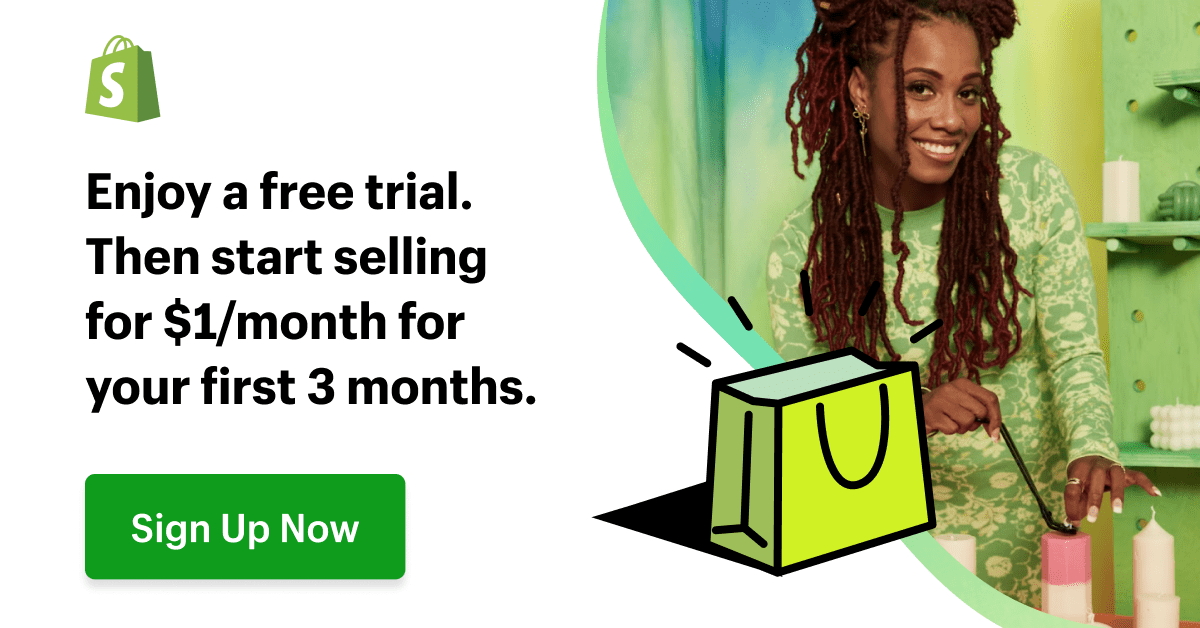

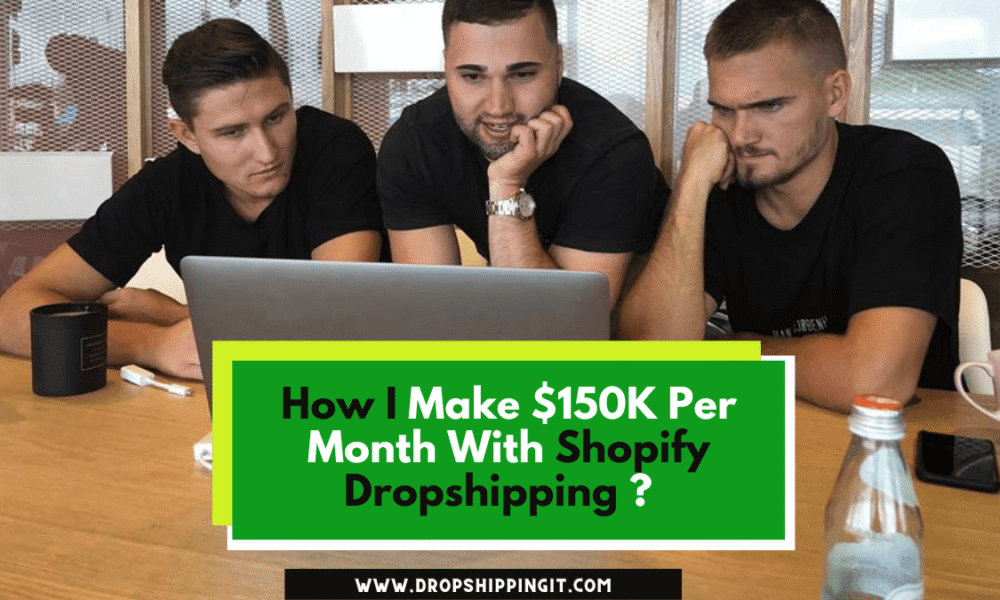
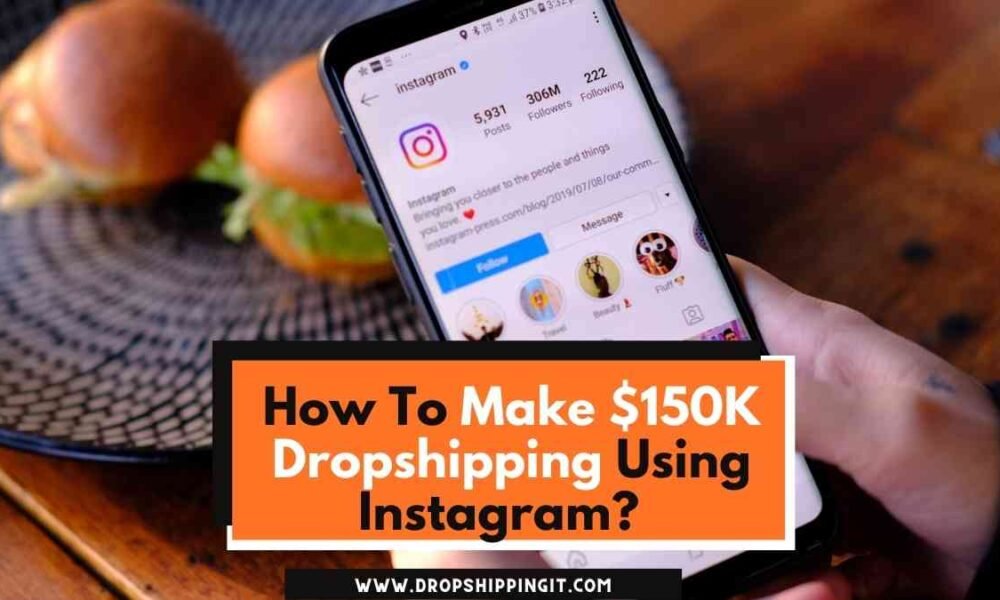
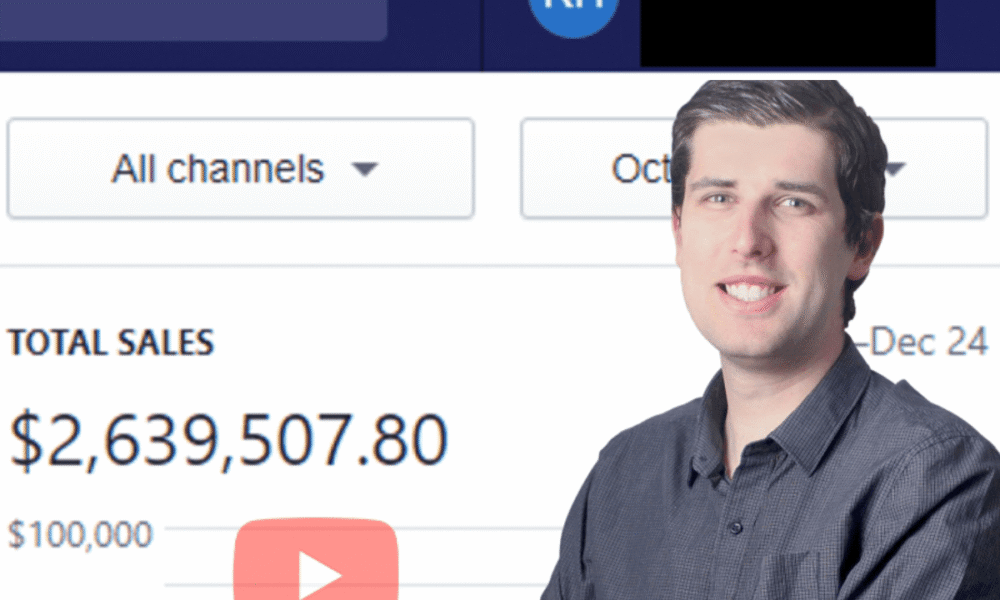
Comments (0)